I still remember my first taste of Wagyu prime rib roast at Kobé Japanese Steakhouse on International Drive during my summer vacation in Orlando in 2021. The tenderness and rich flavors left me absolutely smitten.The experience was so memorable that I couldn’t wait to learn how to cook this succulent dish at home and share the exquisite flavors with friends and family.
To prepare and cook a flawless Wagyu prime rib roast, first trim any excess fat, season it generously with salt, pepper, and herbs, and let it rest at room temperature for 1-2 hours. Next, preheat your oven to 250°F (120°C) and place the seasoned roast on a wire rack set over a baking sheet, bone-side down. Roast for 3-3.5 hours, or until the internal temperature reaches 125°F (51°C) for medium-rare, then remove from the oven, tent with foil, and let it rest for 15-20 minutes before carving and serving.
In this comprehensive guide, we’ll explore the art of cooking Wagyu prime rib roast, sharing expert tips and techniques to help you recreate the luxurious dining experience at home, from selecting the perfect cut to seasoning, roasting, and serving your masterpiece.
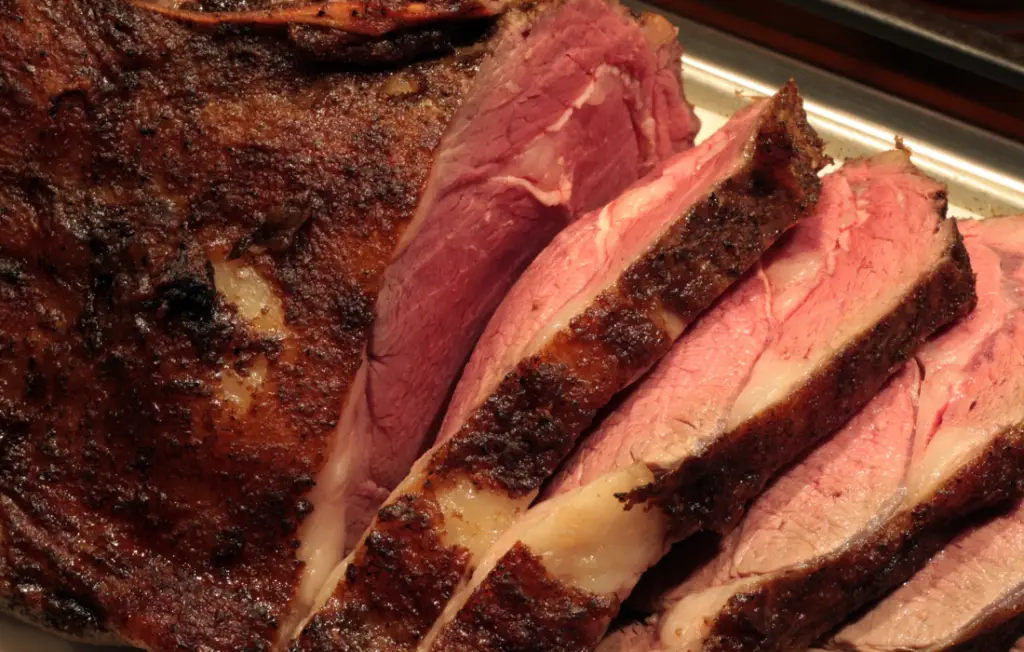
- Understanding Wagyu Prime Rib Roast
- Preparing Your Wagyu Prime Rib Roast
- Cooking Your Wagyu Prime Rib Roast
- 5 ways to Tell When Your Wagyu Prime Rib Roast is Done
- Resting and Carving Your Wagyu Prime Rib Roast
- Serving and Pairing Your Wagyu Prime Rib Roast
- Wine Pairing with Wagyu Prime Rib
- FAQs Related to Cooking Wagyu Prime Rib Roast
- Conclusion
Understanding Wagyu Prime Rib Roast
When discussing Wagyu beef, it’s essential to understand what sets it apart from regular beef. Let’s delve into the world of Wagyu and explore its unique characteristics.
Wagyu vs Regular Beef
| Aspect | Wagyu | Regular Beef |
|---|---|---|
| Origin/Cattle Breed | Four Japanese cattle breeds | Various cattle breeds |
| Marbling | High, even marbling | Less marbling overall |
| Flavor and Tenderness | Rich, tender, buttery taste | Good, but less tender and flavorful |
| Fat Content | High percentage of unsaturated fat | Lower percentage of unsaturated fat |
Wagyu beef, which literally means “Japanese cow,” refers to four specific breeds of Japanese cattle known for their unique marbling and high percentage of oleaginous unsaturated fat. This results in an incredibly tender, richly flavored, and melt-in-your-mouth texture. In contrast, regular beef comes from various breeds of cattle and has less marbling, which makes it less tender and less flavorful compared to Wagyu.
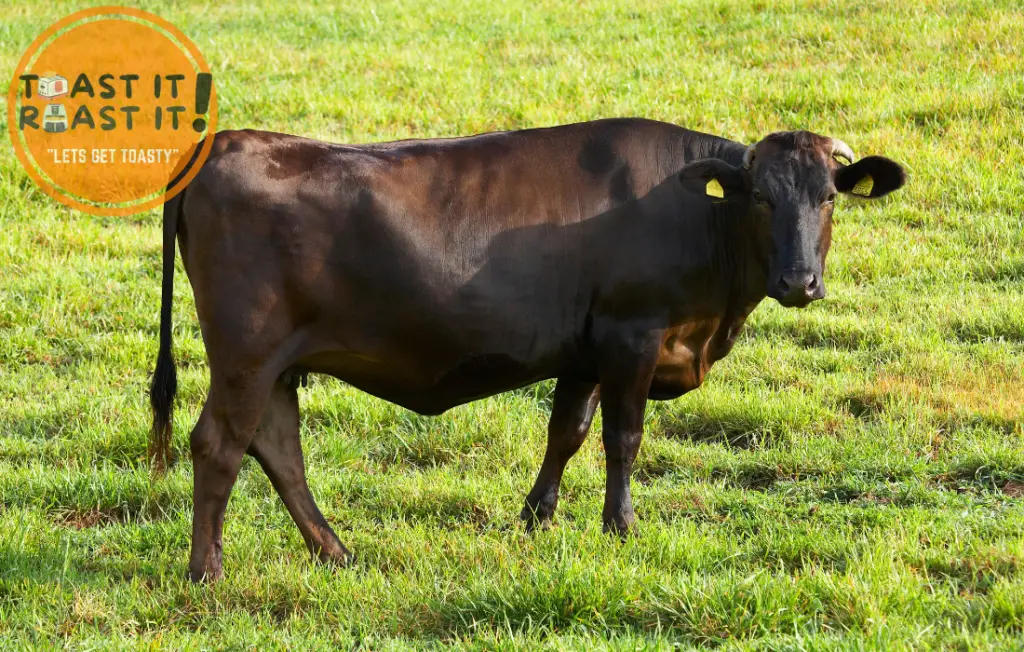
Wagyu Beef Grades
When it comes to grading Wagyu beef, Japan uses a strict grading system to ensure that only the finest cuts make the grade. The most sought-after is the A5 Wagyu prime rib, which is the highest possible rating given to Wagyu beef. This rating signifies that the beef has the highest level of marbling, color, and overall quality.
| Grade | Marbling Score | Color Score | Firmness & Texture Score |
|---|---|---|---|
| A5 | 8-12 | 5-7 | 5-7 |
| A4 | 6-8 | 4-6 | 4-6 |
| A3 | 3-5 | 3-4 | 3-4 |
Choosing the Right Cut of Wagyu Beef
When selecting the ideal cut of Wagyu beef for your prime rib roast, consider the following factors:
- Marbling: Opt for a cut with an even distribution of marbling to ensure maximum flavor and tenderness.
- Thickness: Choose a thickness of at least 2-3 inches to maintain juiciness during the cooking process.
- Weight: A typical Wagyu prime rib roast weighs between 8-12 pounds, but you can adjust the size based on the number of servings needed.
By understanding the unique characteristics of Wagyu beef, the grading system, and the factors to consider when choosing the right cut, you’ll be well-equipped to select the perfect Wagyu prime rib roast for a truly memorable culinary experience.
Preparing Your Wagyu Prime Rib Roast
Let’s talk about getting your Wagyu prime rib roast ready for its big debut! Before you fire up the oven, you’ll need to properly store, age, and season your luxurious cut of beef. Don’t worry; we’ve got you covered with all the juicy details.
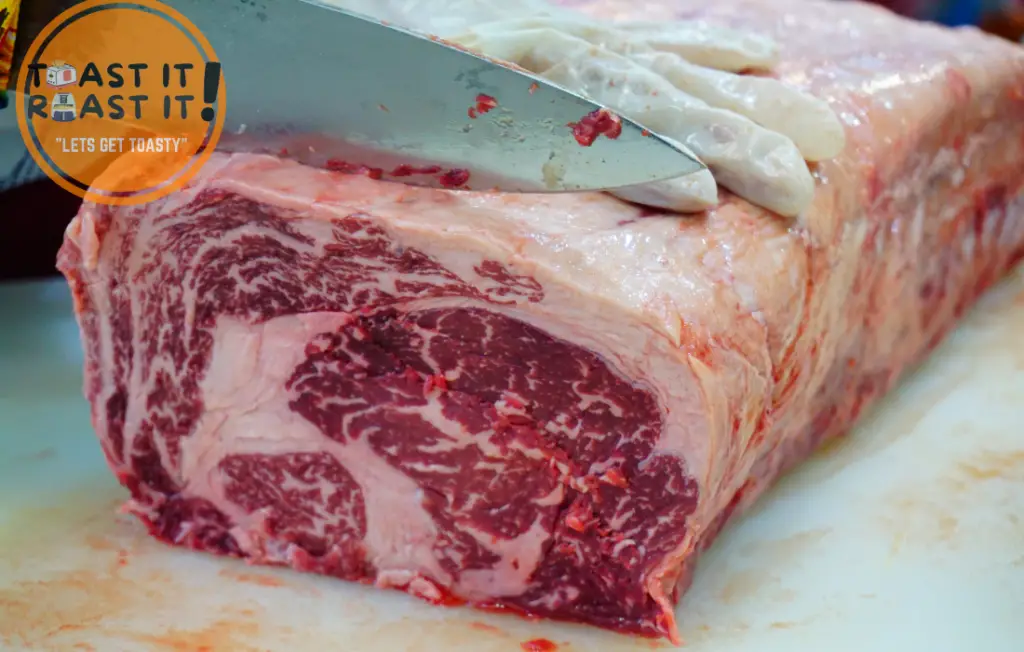
How to Store Wagyu Beef (Step by Step)
- Wrap it up: Carefully wrap your Wagyu beef in plastic wrap or butcher paper to protect it from air and moisture.
- Chill out: Place your wrapped Wagyu beef on a plate or tray in the coldest part of your refrigerator, usually the bottom shelf or meat drawer.
- Stay frosty: If you don’t plan to cook your Wagyu beef within 3-5 days, consider freezing it. Just double-wrap it in plastic wrap and place it in a resealable plastic freezer bag before popping it into the freezer.
- Thaw it right: When you’re ready to cook, allow your Wagyu beef to thaw slowly in the refrigerator for 24-48 hours to preserve its texture and quality.
Aging Wagyu Prime Rib
Aging your Wagyu prime rib can further enhance its flavor and tenderness. While it’s not absolutely necessary, you can experiment with either dry or wet aging methods if you’re feeling adventurous.
- Dry aging: Place your unwrapped Wagyu prime rib on a wire rack set over a tray in the refrigerator. Allow it to age for 7-14 days, occasionally checking for any undesirable odors or mold. Trim off any dried or discolored surfaces before cooking.
- Wet aging: Keep your Wagyu prime rib in its vacuum-sealed packaging and refrigerate it for up to 4 weeks. Just make sure to cook it within a few days of breaking the seal.
How to Season Wagyu Prime Rib
In this section, we’ll unveil the secrets to perfectly seasoning your Wagyu prime rib, covering essential steps from selecting the right seasonings to the optimal application technique, ensuring a harmonious balance of flavors that enhances the rich, buttery taste of this exquisite cut of beef.
Here’s a step-by-step guide to season your Wagyu prime rib:
Step 1: Bring it to room temperature Remove the Wagyu prime rib from the refrigerator and let it sit at room temperature for about an hour. This will help the meat cook more evenly and allow the seasonings to penetrate better.
Step 2: Pat it dry Using clean paper towels, gently pat the entire surface of the Wagyu prime rib to remove any excess moisture. This will help the seasonings adhere better and promote a beautiful crust when cooking.
Step 3: Choose your seasonings Select a simple seasoning mix that will complement the rich flavors of the Wagyu beef. A classic combination of kosher salt and freshly ground black pepper works well. Alternatively, you can use a high-quality, specially formulated seasoning blend like The Tailgate Pitmaster Collection or The Wagyu Experience Seasoning.
Step 4: Season generously Sprinkle your chosen seasonings evenly over the entire surface of the Wagyu prime rib. Be generous with the application but don’t overdo it, as you want to enhance the beef’s natural flavors without overpowering them.
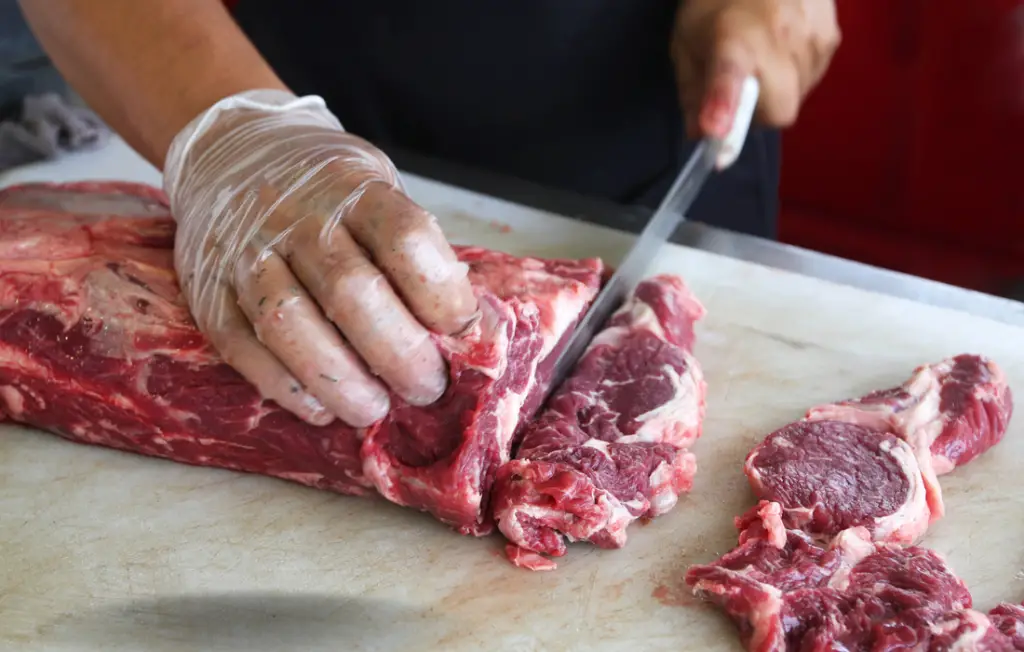
Step 5: Press and rub Gently press the seasonings into the meat using your hands, making sure they adhere well to the surface. Rub the seasonings evenly across the meat to ensure full coverage and to help them penetrate the outer layers of the beef.
Step 6: Let it rest Allow the seasoned Wagyu prime rib to rest for 15-30 minutes at room temperature. This will give the seasonings time to absorb into the meat and help the flavors meld together.
Step 7: Cook to perfection Now that your Wagyu prime rib is seasoned and ready, it’s time to cook it to perfection using your preferred method, such as roasting or grilling. Enjoy the luxurious taste of perfectly seasoned Wagyu beef!
Cooking Your Wagyu Prime Rib Roast
Oven Roasting Wagyu (Prime Rib Temperature, Wagyu Cooking Time)
When oven-roasting Wagyu prime rib, preheat your oven to 225°F (107°C). This low temperature ensures even cooking and helps maintain the meat’s tenderness. Place the seasoned Wagyu prime rib on a roasting rack set in a roasting pan, bone side down. Insert a meat thermometer into the thickest part of the roast, ensuring it doesn’t touch the bone. Roast the Wagyu prime rib until the internal temperature reaches about 120°F (49°C) for rare, 130°F (54°C) for medium-rare, or 140°F (60°C) for medium, which takes approximately 3 to 3.5 hours for a 4-5 pound roast.
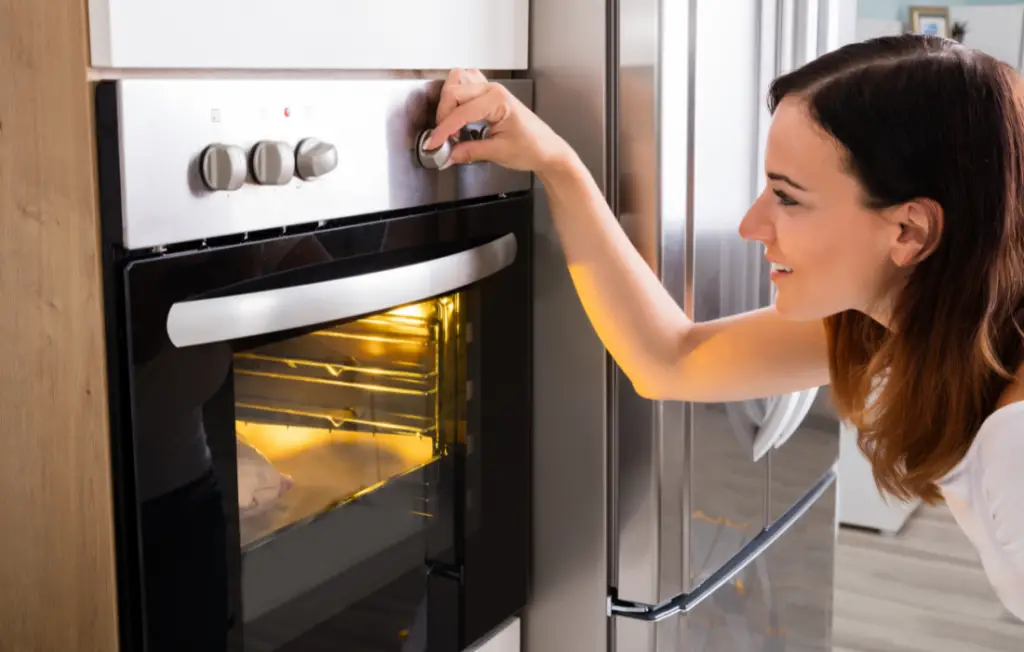
| Cooking Method | Temperature | Approximate Cooking Time | Notes |
|---|---|---|---|
| Air Fryer | 225°F (107°C) | 3 – 3.5 hours | May require more frequent checking |
| due to faster cooking. | |||
| Toaster Oven | 225°F (107°C) | 3 – 3.5 hours | Check roast size and adjust cooking |
| time as needed. | |||
| Slow Cooker | Low setting | 6 – 8 hours | Pre-sear the roast for a better crust. |
| Cooking time may vary depending on the | |||
| slow cooker. | |||
| Conventional Oven | 225°F (107°C) | 3 – 3.5 hours | Most accurate and recommended method. |
Reverse Sear Wagyu Prime Rib (Searing Wagyu Roast)
To achieve a beautiful crust on your Wagyu prime rib, use the reverse sear method. After oven-roasting the meat to your desired internal temperature, remove it from the oven and let it rest for about 15 minutes. Meanwhile, preheat a cast-iron skillet or heavy-duty pan over high heat. Add a small amount of high-smoke-point oil (such as grapeseed or avocado oil) to the pan. Once hot, sear the Wagyu prime rib on all sides for about 1-2 minutes per side, or until a deep brown crust forms.
Wagyu Fat Rendering During Cooking
The process of fat rendering is essential to achieve a delicious and tender Wagyu prime rib. When cooked at low temperatures, the intramuscular fat (marbling) slowly melts, infusing the meat with its rich flavor and maintaining its juiciness. For optimal rendering, it is crucial to cook Wagyu prime rib at a consistent temperature, as mentioned in the oven roasting section. Additionally, monitor the meat’s internal temperature using a meat thermometer to ensure it doesn’t overcook, which would result in a less tender and less flavorful roast.
5 ways to Tell When Your Wagyu Prime Rib Roast is Done
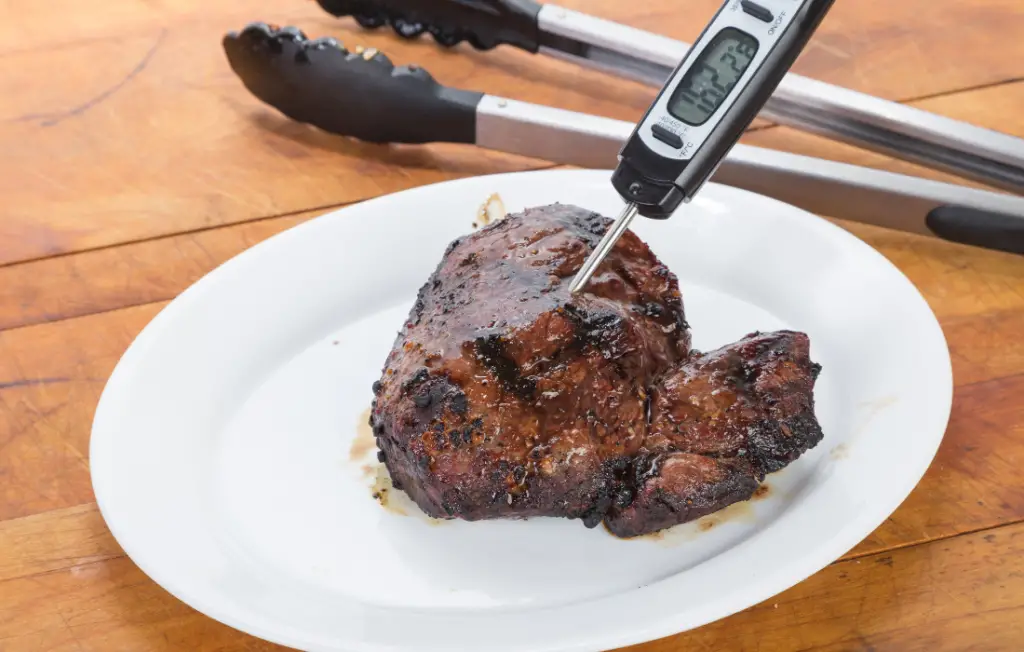
- Meat Thermometer: The most reliable way to determine if your Wagyu prime rib roast is done is by using a meat thermometer. Insert it into the thickest part of the roast, making sure it doesn’t touch the bone. Aim for an internal temperature of 120°F (49°C) for rare, 130°F (54°C) for medium-rare, or 140°F (60°C) for medium. My personal experience confirms that using a meat thermometer guarantees accurate results every time.
- Touch Test: Another way to check the doneness of your Wagyu prime rib is the touch test. Gently press the surface of the meat with your finger – rare meat will feel soft and slightly springy, while medium-rare meat will have a bit more resistance. Be cautious, as this method might not be as accurate as using a thermometer, but it can be a helpful backup.
- Time: You can estimate the cooking time for your Wagyu prime rib based on its weight. A 4-5 pound roast cooked at 225°F (107°C) should take approximately 3 to 3.5 hours to reach medium-rare. This method is not foolproof, as oven temperatures can vary, but it can provide a rough estimate of when to start checking the roast’s internal temperature with a thermometer.
- Visual Cues: While cooking your Wagyu prime rib, pay attention to visual cues like the crust’s color and fat rendering. A perfectly cooked prime rib should have a deep golden-brown crust and visibly rendered fat. Keep in mind that visual cues alone may not guarantee the desired doneness, so it’s best to use them in conjunction with other methods.
- Resting: A crucial step to ensure your Wagyu prime rib is done correctly is letting it rest after cooking. When you remove the roast from the oven, allow it to sit for 15 minutes before carving. Resting helps the meat retain its juiciness and allows the internal temperature to stabilize. If the juices flow clear when the roast is cut, that’s a good indicator that it’s done.
Using a combination of these techniques, along with my own personal experiences, will help you determine when your Wagyu prime rib roast is perfectly cooked, ensuring a delectable and memorable dining experience.
Resting and Carving Your Wagyu Prime Rib Roast
Wagyu Roast Rest Time After cooking your Wagyu prime rib roast to perfection, it’s essential to let it rest for about 15 minutes before carving. This resting period allows the juices to redistribute throughout the meat, ensuring that each bite is tender, juicy, and full of flavor. Trust me, waiting those extra minutes is worth it in the end!
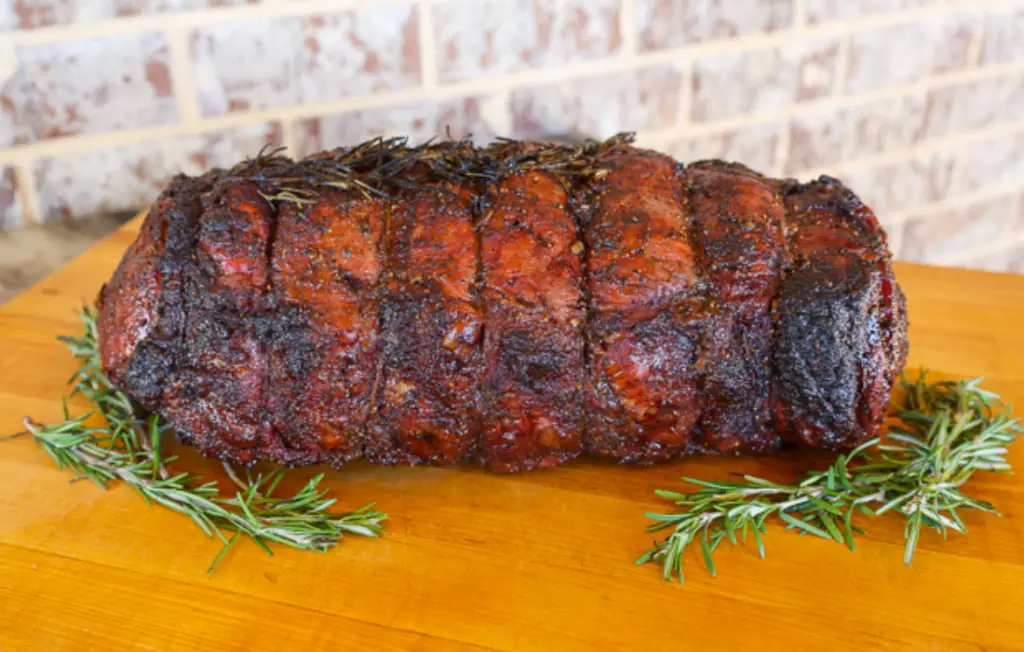
Proper Knife for Carving Prime Rib
When it comes to carving your delicious Wagyu prime rib, having the right knife can make all the difference. A long, sharp carving knife or slicing knife is your best bet for this job. The length allows you to make smooth, even cuts, while the sharp blade helps you navigate around the bones with ease. So, make sure to sharpen your knife before getting started to ensure a clean, precise carve.
Prime Rib Carving Technique Ready to carve your mouthwatering Wagyu prime rib? Follow these simple steps for a beautiful presentation:
- Place the roast on a cutting board with the bones facing down and the fat cap facing up.
- Using your carving knife, make a horizontal cut along the base of the rib bones to separate them from the meat. This cut will free the roast from the bones, allowing for easier carving.
- Turn the roast so that the cut side is down, and the fat cap is facing up.
- Starting from one end, carve the roast into thin, even slices, cutting against the grain. Cutting against the grain helps to shorten the muscle fibers, making the meat even more tender.
- Arrange the carved slices on a serving platter, showcasing that beautiful pink interior, and don’t forget to serve the deliciously crispy crust alongside!
Now that you’ve carved your Wagyu prime rib roast, it’s time to enjoy the fruits of your labor. Gather your friends and family and dig in – you’ve earned it!
Serving and Pairing Your Wagyu Prime Rib Roast
Sides for Wagyu Prime Rib The richness of Wagyu prime rib pairs beautifully with a variety of side dishes. Here are a few classic and complementary sides to serve alongside your Wagyu prime rib:
| Side Dish | Description |
|---|---|
| Garlic Mashed Potatoes | Creamy, buttery, and full of flavor, these potatoes are a classic pairing with any prime rib. |
| Green Beans Almondine | Tender green beans sautéed with almonds and garlic add a touch of elegance to the plate. |
| Grilled Asparagus | A simple and healthy side, grilled asparagus brings a lovely charred flavor to the mix. |
| Yorkshire Pudding | This British staple, made from a simple batter, soaks up the delicious juices from the roast. |
| Creamed Spinach | A luxurious and flavorful option, creamed spinach adds a touch of decadence to the meal. |
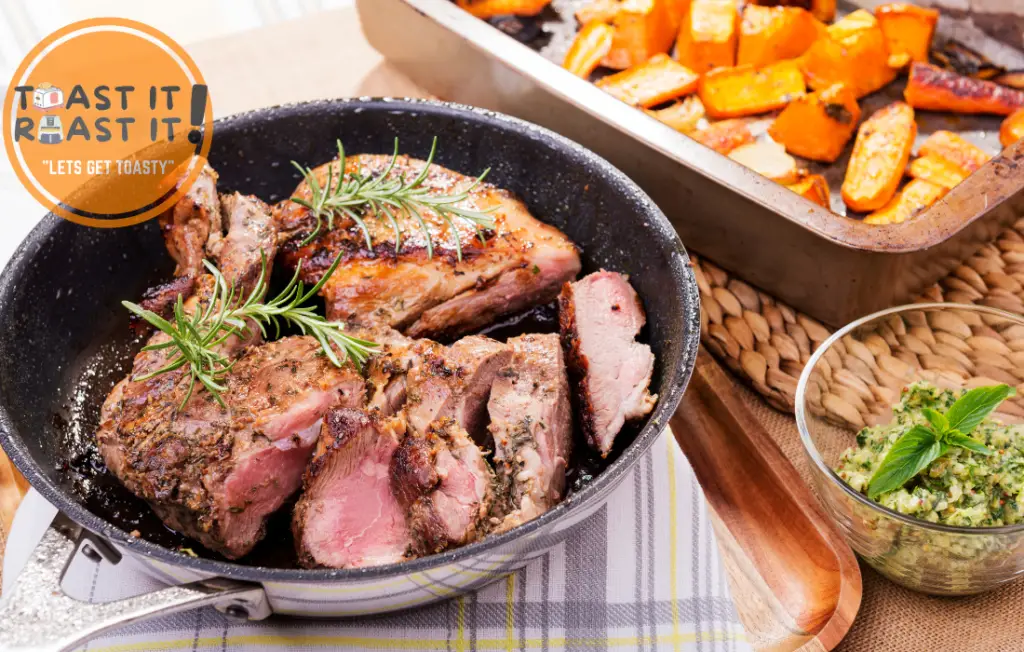
Wine Pairing with Wagyu Prime Rib
When it comes to pairing wine with your Wagyu prime rib, you’ll want to choose something bold and full-bodied to stand up to the richness of the meat. Consider these wine selections:
| Wine | Description |
|---|---|
| Cabernet Sauvignon | A classic choice, Cabernet Sauvignon has bold tannins and dark fruit flavors that complement the meat. |
| Malbec | This Argentinean wine offers dark fruit flavors and a velvety texture that pairs well with Wagyu. |
| Shiraz | Known for its peppery and dark fruit notes, Shiraz can stand up to the richness of the roast. |
| Merlot | A slightly softer option, Merlot still has the body and flavor to match the Wagyu’s intensity. |
Prime Rib Serving Size When planning your meal, it’s important to consider the serving size for your Wagyu prime rib. A good rule of thumb is to allow for 1 pound (16 ounces) of bone-in prime rib per person. This accounts for the weight of the bones and provides a generous portion of meat for each guest. However, for boneless prime rib, you can reduce the serving size to about 12 ounces per person.
Now that you have all the details for serving and pairing your Wagyu prime rib roast, you’re ready to create an unforgettable dining experience for your friends and family. Bon appétit!
FAQs Related to Cooking Wagyu Prime Rib Roast
How to cook Wagyu steak (How to cook Wagyu on the grill)?
- Cooking Wagyu steak on the grill is simple. First, preheat the grill to high heat. Season the steak with salt and pepper, and then sear it on each side for about 1-2 minutes. Reduce the heat to medium and continue to cook the steak for another 3-5 minutes per side, depending on your desired doneness.
How to reheat Wagyu prime rib?
- To reheat Wagyu prime rib, preheat your oven to 250°F (120°C). Place the prime rib in a roasting pan with a wire rack, and cover it with aluminum foil. Reheat it in the oven until it reaches an internal temperature of 135°F (57°C) for medium-rare or 145°F (63°C) for medium.
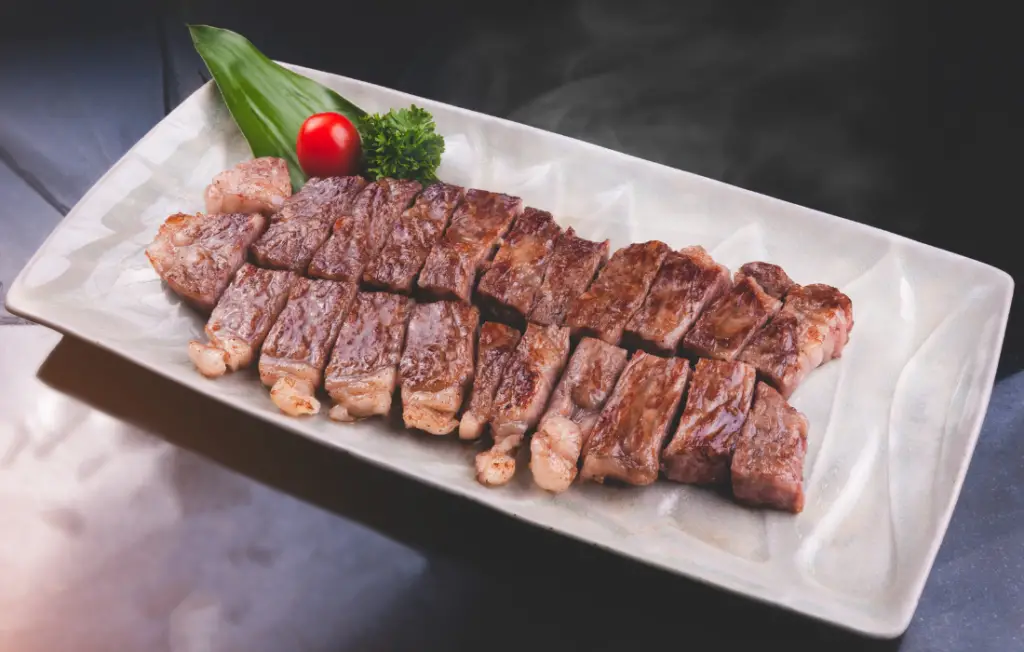
Is Wagyu worth the price? What is so special about Wagyu beef
- Many people believe Wagyu is worth the price due to its unique flavor, tenderness, and marbling. The intense marbling in Wagyu beef results in a buttery, melt-in-your-mouth texture that is hard to find in other types of beef. The high-quality fat also lends a rich flavor to the meat, making it a sought-after delicacy.
Why is Wagyu so expensive?
- Wagyu beef is expensive due to its rarity, the meticulous care given to the cattle, and the strict grading system used to ensure quality. Wagyu cattle are raised with special attention to their diet, living conditions, and even their emotional well-being. All of these factors contribute to the exceptional quality and high price of Wagyu beef.
Which is better, Kobe or Wagyu?
- Kobe beef is a specific type of Wagyu beef that comes from the Tajima strain of Japanese Black cattle raised in the Hyogo Prefecture. Kobe beef is considered to be one of the most luxurious and expensive types of Wagyu due to its strict production standards and limited availability. However, both Kobe and other types of Wagyu beef are exceptional in terms of flavor and tenderness, and the “better” choice often comes down to personal preference and budget.
What part of the cow is Wagyu?
- Wagyu is not a specific part of the cow but rather a breed of cattle. The term “Wagyu” refers to any of the four Japanese breeds of cattle: Japanese Black, Japanese Brown, Japanese Shorthorn, and Japanese Polled. These breeds are known for their high-quality meat, which features exceptional marbling and tenderness.
Conclusion
In this article, we’ve explored the delicious world of Wagyu prime rib roast, from understanding what sets Wagyu beef apart from regular beef to the various steps involved in preparing, cooking, and serving this delectable dish. We’ve also addressed frequently asked questions and provided guidance on how to know when your Wagyu prime rib roast is done to perfection.
With this newfound knowledge and appreciation for Wagyu prime rib roast, it’s time to gather your ingredients, fire up the oven or grill, and embark on a culinary adventure. Don’t be afraid to try out different seasonings, cooking methods, and pairings to make this luxurious dish uniquely yours. With practice, you’ll master the art of cooking Wagyu prime rib roast and impress your friends and family with your culinary prowess. So go ahead, indulge yourself in the rich, buttery goodness of Wagyu beef, and elevate your dining experience to new heights.

